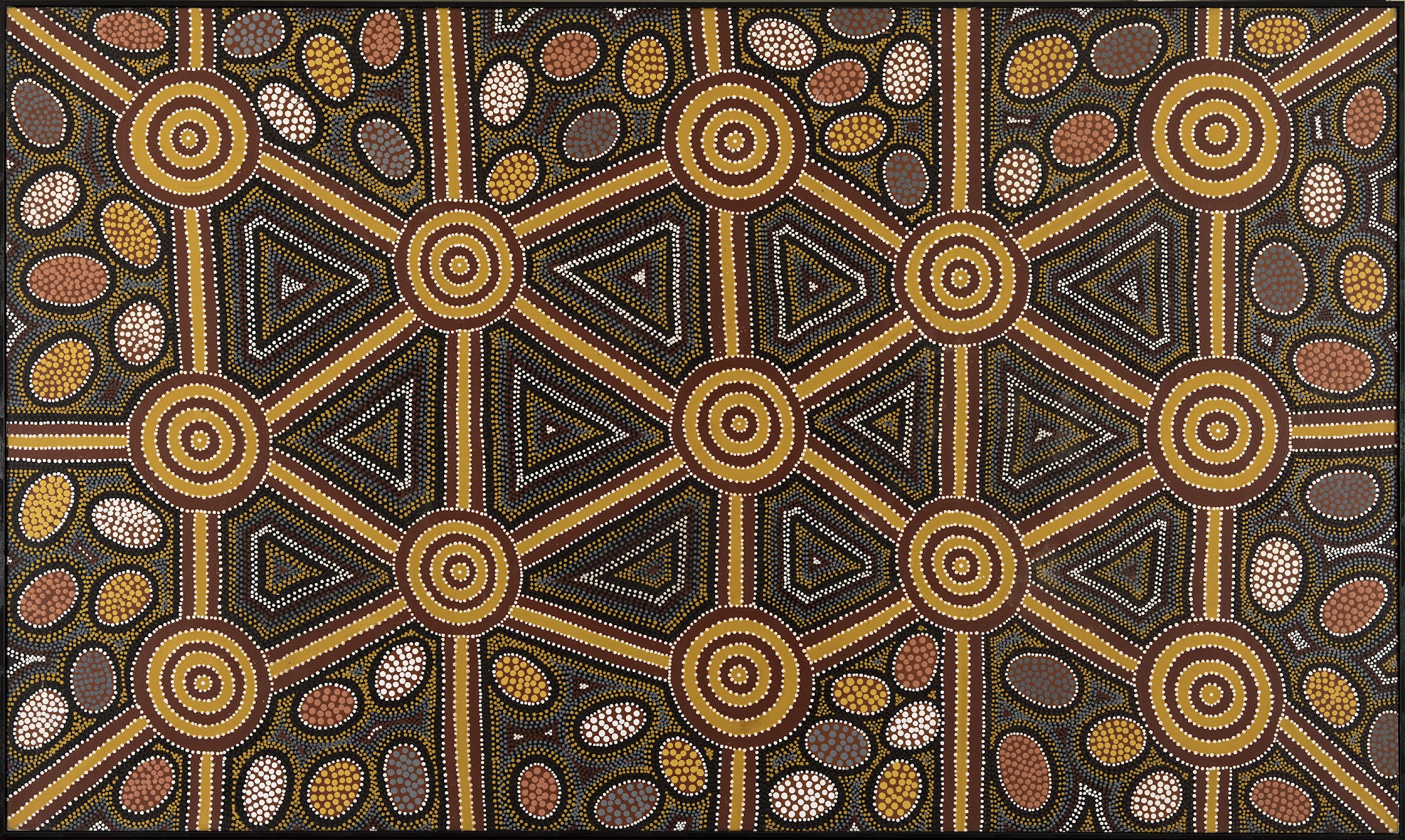Under the influence of Anatjari Tjampitjinpa, a pioneer of the Aboriginal art movement, George begins to discover his artistic identity. In 1964, his family group is integrated into an Aboriginal community, an experience that confronts him with a reality that is both fascinating and troubling, where ancient traditions clash with modernity.
It is in 1976 that he embarks on painting, drawing inspiration from the myths of the Tingari Cycle, these ancestral stories. Among his works, the waterhole of Putaralkanya stands as a vibrant symbol of his connection to the land and his people. Using the bright colors of acrylic, he manages to capture the essence of his territory, immortalizing the visions rooted in the Aboriginal soul.
His artistic career takes off in the late 1970s when he joins Papunya Tula Artists, a collective that will revolutionize contemporary Aboriginal art. His works are showcased in prestigious galleries, such as the Art Gallery of South Australia, the Museum of Victoria, the Kelton Foundation in the United States, and the University of Virginia.
Thus, George Yapa Tjangala continues to carve his path, a journey between the stars and the sand, connecting ancestors to future generations.

Sign up to the newsletter and stay informed about our latest acquisitions and exhibitions:
© Galerie Rousset 2023